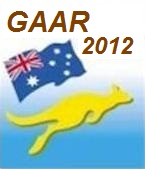|
|
 |
VFR Guide |
| The
following section contains a simplified guide to Visual Flight Rules
(VFR). This guide represents the basic requirements when flying VFR in
the event. This simplified guide to VFR is adapted from the Visual Flight Rules Guide published by the Civil Aviation Authority of Australia (CASA). The full version of the Guide is available on the CASA web site at the following link. http://www.casa.gov.au/scripts/nc.dll?WCMS:STANDARD::pc=PC_90008 VFR flights, by both day and night, are conducted in Visual Meteorological Conditions (VMC). VMC requirements vary depending on the class of airspace and altitude. The following VMC will be used as a standard for the event. Above 3000 feet AMSL:
When at or below 3000 feet AMSL or 1000 feet AGL, whichever is the higher:
VFR Navigation.
Note: Flight above more than 4/8 of cloud, or over featureless land area and over the sea, may preclude visual position fixing at the required intervals and may, therefore, make visual navigation impracticable. VFR flight on top of more than 4/8 cloud is available provided that:
Cruising Levels
Aerodrome Procedures - General Left-hand circuits must normally be made unless local terrain precludes a left-hand circuit. Right-hand circuit requirements are listed specifically in the event Flight Briefings. An aircraft is permitted, however, to execute a turn opposite to the circuit direction on to a course if it has climbed straight ahead to 1500 feet above the aerodrome elevation, or it is at least 3 nautical miles from the aerodrome. By convention, the circuit heights flown for piston prop aircraft is 1000 feet AGL. The turn on to final approach must be completed by a distance that is not less than 500 metres from the runway threshold Circuits and Landing An aircraft approaching an aerodrome for landing must join on the upwind, crosswind or downwind leg of the circuit unless conducting a straight-in approach. When approaching for landing, and within 3 nautical miles of the aerodrome, all turns must be to the left except where right hand circuits are specified or when entering the upwind, crosswind or downwind leg. Aircraft conducting a straight-in approach must conduct all manoeuvring to establish the aircraft on final approach outside a 5 nautical mile radius from the intended landing runway threshold. When executing a missed approach, refer to the Missed Approach procedures in the Aerodrome and Procedures Charts or climb to circuit altitude and re-enter the circuit on the crosswind leg. Take-Off and Outbound An aircraft must maintain the departing runway heading and must not change direction on to a course until it has climbed straight ahead to 1500 feet above the aerodrome elevation, or it is at least 3 nautical miles from the aerodrome.
|
|

